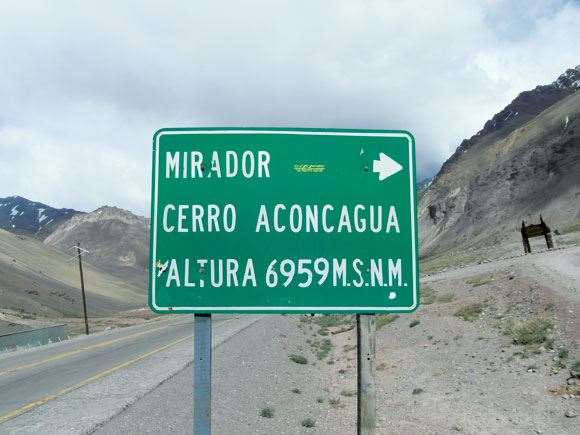Climbing a high mountain produces scant adrenaline and offers little in the way of thrills. Instead it’s all about discomfort;
 photos by AARON SCOTT
photos by AARON SCOTTMartin has our expedition planned to the minute. We will approach the mountain slowly, carefully. We’ll advance from the south, spending two nights at pre-base camp (3300m). From there, we’ll walk clockwise around the mountain until we reach base camp, Plaza de Mulas (4300m), at the foot of the western face. We’ll spend four days here: two practice climbs and two rest days. We’ll spend this time feeling the mountain out, fortifying our lungs against the thin air. We’ll eat elephantine portions of food and drink camel-like quantities of water. Then, with our bodies hardened to the task, we’ll make a three-day dash for the summit, skipping in one-night leaps across the three high camps sitting at 4900m, 5400m and 6000m. Effectively, Martin’s plan will see us lay a two-week siege to Aconcagua. We’ll wear down the mountain’s ramparts before making a charge for the city gates.
But, despite all the planning, summiting Aconcagua is a seriously difficult undertaking. The backbone of the high Andes is a hostile strip of Earth; a place where life does not come easy. It’s thought the Incas were the first people to settle this region, sometime in the late 15th Century. The foundations of Incan villages and petrified wood carted on Incan shoulders can still be found in the dry stone valleys that lead up to the base of the mountain. In 1985 an Incan mummy ‒ the foetally crouched body of a seven-year-old boy ‒ was discovered 5300m up the southern face of Aconcagua. I ask Martin, our head guide, how they managed to cart a dead body up a precipitous, ice-covered slope of rock that modern alpinists still find technically challenging. He widens his eyes and shrugs his shoulders. “Incas!” he exclaims brightly.
God knows what the Incas were doing here. Shivering miserably, most likely. Even at the Aconcagua Park gates, sitting at just over 2500m above sea level, the wind is ferocious, the cold downright painful. It’s mid-morning when we file off the minibus at the gates, but already a frigid southerly is bending a line of poplars to the horizontal and filling the valley with a dense grey fog and swirling flecks of snow. In the distance, up the valley, we can see the lower slopes of the southern face of Aconcagua. It’s a spare corridor of land. The only life that seems to flourish is a knee-high bush spined with inch-long, ivory-coloured thorns. The water that tumbles through the valley froths a muddy brown. Martin gathers us in a group and delivers a short pep-talk. “Don’t just focus on the summit, okay? Don’t always be thinking about summit day, summit day. Enjoy every day, okay?” He frowns. “You don’t decide if you get to the summit. The guides don’t decide if you get to the summit. Always, it’s the mountain who decides. Okay?”
Then we set off up the valley – very, very slowly. Bracketed by guides, two at the front,two at the back, we walk at a pace that could be generously described as “ambling”. We step, pause, then step again. Octogenarians move with more purpose. Our duffel bags, bulging with gear, are being taken to camp by a team of mules, so we’re only carrying our featherweight day packs. We creep up the thorned valley, step, pause, step. When we finally arrive at Confluencia, four hours later, we find tables covered in bowls of fruit and platters of cakes. There’s an urn of boiling water, boxes of tea bags, bundles of coffee sachets and jars of hot chocolate. A pair of smooth-skinned waitresses emerges with plates of cheese and bread. As we demolish the supplies, I find myself wondering how this activity can possibly morph into something demanding.
But that evening, I see the direction things are heading. When the sun dips below the stone walls of the valley, a stinging chill settles. The wind picks up, whistling through the thorn bushes and spraying the camp with a fine spindrift. When we gather for dinner, most of the group is kitted in double gloves and down jackets. My feet are already numb inside two pairs of woollen socks and my Goretex-lined boots. How Incan shepherds – garbed in leather sandals and alpaca shawls – survived this sort of cold is anyone’s guess. After we’ve eaten, Brad, the Kiwi, ducks out to the toilet. A minute later he reappears, grinning nervously. “Um, guys, I think the toilet’s frozen solid.”
By the time the first Europeans ventured this deep into the Andes, they were astonished by the hostility of the place; the doses of deadly discomfort it managed to dole out. When San Martin’s troops drove the Spanish colonialists from Argentina in 1816, General Bartolome Mitre found himself leading a cadre of fighting men through this section of the mountains. He wrote in his diary, “The rarefied air causes such imbalance in the vital dynamism that it may even lead to death. It did cause some casualties among our men. Yet, slow progress, careful steps taken, and a diet based on garlic and onions made it possible for both man and beast to overcome such rough conditions.”
Related Articles

Socceroos coach says Argentina can only 'play two ways'

Argentina coach on 'inferior' Socceroos: 'I don't fully agree'













